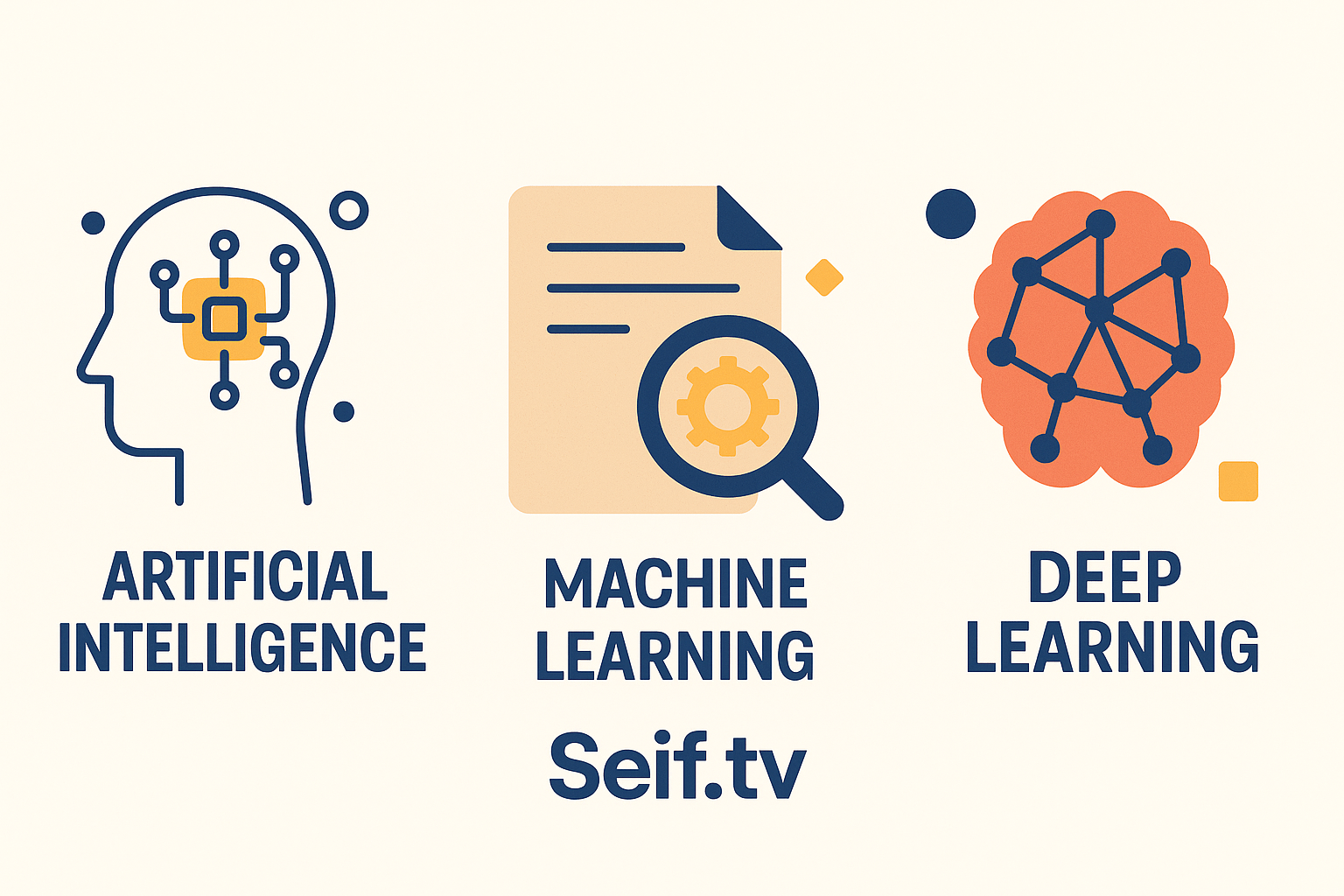5 Key Differences Between AI, Machine Learning, and Deep Learning!🔍
In today’s fast-paced digital world, it’s nearly impossible to ignore the buzzwords “Artificial Intelligence,” “Machine Learning,” and “Deep Learning.” They dominate tech conversations, appear in news articles, and shape how businesses innovate. But while these terms are often used interchangeably, they actually represent different levels of sophistication and application in the tech world. Understanding the distinctions between them isn’t just for engineers or data scientists—it’s essential for anyone navigating today’s digital economy.
Think of Artificial Intelligence (AI) as the umbrella concept. Under this umbrella sits Machine Learning (ML), and nestled even deeper is Deep Learning (DL). Each plays a distinct role in how computers “think,” learn from data, and perform tasks that were once exclusive to humans. Whether you’re trying to implement AI into your business or just want to sound smart at your next meeting, knowing these key differences can help you stay ahead of the curve.
In this post, we’ll break down the **5 key differences** between AI, Machine Learning, and Deep Learning in a clear and digestible way. From their definitions to real-life applications, you’ll walk away with a sharper understanding of how these technologies shape our world.
1. Definition and Scope
Artificial Intelligence (AI) is the broadest concept. It refers to the ability of a machine to simulate human intelligence—think decision-making, speech recognition, or even playing chess. AI doesn’t necessarily need to learn from data; some systems follow pre-programmed rules to mimic intelligence.
Machine Learning (ML) is a subset of AI that enables machines to learn from data and improve over time without being explicitly programmed for every scenario. It’s the science behind recommendation systems like those on Netflix.
Deep Learning (DL) is a specialized branch of ML that uses neural networks inspired by the human brain. These networks have multiple layers (hence “deep”) and are especially powerful in tasks like image recognition, natural language processing, and autonomous driving.
2. Data Requirements
One of the major differences between the three is how much data each requires. Traditional AI systems might not need data at all—they rely on logic and rules. For example, a rule-based chatbot uses decision trees rather than learning from past conversations.
Machine Learning thrives on data. It needs structured datasets to identify patterns. The more quality data you provide, the better the system performs.
Deep Learning takes this a step further. It requires massive amounts of labeled data to train its deep neural networks. That’s why companies like Google and Meta dominate DL—they have the data resources to make it work.
3. Complexity and Architecture
AI can be as simple as a set of if-then rules. For instance, a thermostat that adjusts based on temperature input can be classified as an AI system. The architecture here is basic logic-driven programming.
Machine Learning introduces algorithms like decision trees, support vector machines, and k-nearest neighbors. These are mathematical models that adapt based on training data.
Deep Learning uses multi-layered neural networks that can be extremely complex. These networks mimic the structure of the human brain and are capable of learning hierarchical patterns—ideal for tasks like facial recognition or speech synthesis.
If you want a deeper dive into neural networks, check out this beginner-friendly guide from IBM.
4. Interpretability
As complexity increases, interpretability usually decreases. Rule-based AI is easy to understand—you can see the logic laid out step by step. ML algorithms are more complex but often come with tools for interpretability like feature importance metrics.
Deep Learning, on the other hand, is often referred to as a “black box.” While its predictions are highly accurate, it’s difficult to understand how exactly it arrives at a conclusion. This is a growing concern in fields like healthcare and criminal justice, where transparency is crucial.
That’s why some companies prefer using ML over DL, especially when compliance and explainability are required by law or regulation.
5. Applications in Real Life
AI is already all around us—from virtual assistants like Siri to smart home devices like Amazon Echo. It powers decision-making in banks, HR systems, and even traffic control.
Machine Learning shines in data-driven industries. It’s used in fraud detection, recommendation engines, customer segmentation, and financial forecasting. If you’ve ever used Spotify or YouTube, ML has shaped your experience.
Deep Learning is responsible for advanced technologies like self-driving cars, voice assistants that understand you perfectly, and medical imaging that can detect cancer earlier than human doctors. It’s the backbone of innovations like OpenAI’s ChatGPT and Sora.
Conclusion
Artificial Intelligence, Machine Learning, and Deep Learning are not interchangeable terms—they represent different levels of complexity and capability in the world of intelligent systems. AI is the big-picture concept, Machine Learning brings in data-driven adaptation, and Deep Learning introduces advanced neural networks for highly specific tasks.
Understanding these differences is not just a tech geek’s hobby. Whether you’re a student, entrepreneur, or curious learner, this knowledge can help you make smarter decisions in a world increasingly powered by intelligent machines.
Want to stay ahead of the AI curve and join a forward-thinking community? 👉 Join our WhatsApp group here for insights, tools, and real talk about how to thrive in the age of artificial intelligence.


